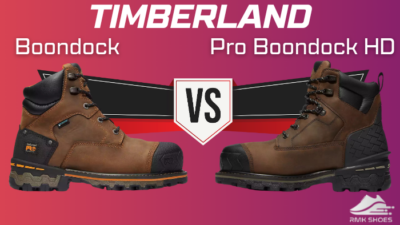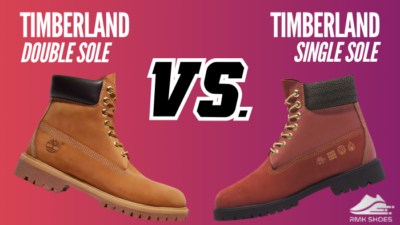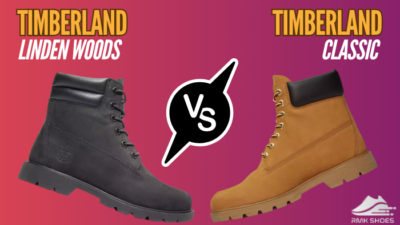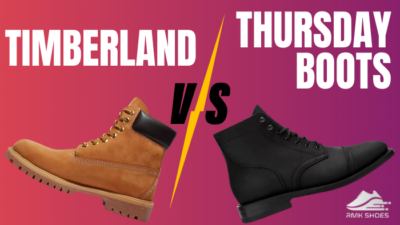Choosing the most appropriate shoe based on your biomechanics is crucial for good feet and injury-free rides.
But when it comes to On Cloud shoes, you must consider your foot shape, running needs, and style preferences to pinpoint the best On Running shoe.
Throughout this comparison, I will compare the Cloudflow 4 and Cloud 5 shoes and track down the most appropriate shoe for your individual needs.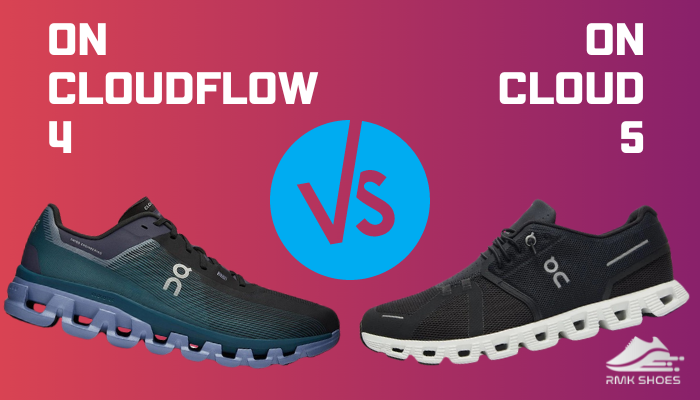
Without further ado, let’s begin!
Overview of Cloud 5 and Cloudflow 4
On Running’s Cloud shoes are widely popular due to their unique aesthetics and instantly recognizable CloudTec pods.
The Cloud 5 and the Cloudflow 4 are from two distinct lines made for different purposes.
On Running’s Cloud 5
Cloud 5 was first introduced in 2014 and quickly gained popularity among runners and non-runners because of its versatile design and eye-catching CloudTec technology.
Over the years, On has improved its design and performance and introduced several versions.
For instance, some iterations of Cloud 5 are Cloud 5 Waterproof, Cloud 5 Active, and Cloud 5 Shift, each with unique design and properties.
This versatile shoe can accompany you in workouts, short runs, and even a 5k run, but it’s more of a lifestyle shoe and is incredibly comfortable for prolonged wear.
On Running’s Cloudflow 4
Introduced in 2016, the Original Cloudflow was a versatile shoe with a perfect combination of comfort and responsiveness.
On has introduced four versions for the Cloudflow line until now, and the Cloudflow 4 is the latest edition to the family that was launched in 2023.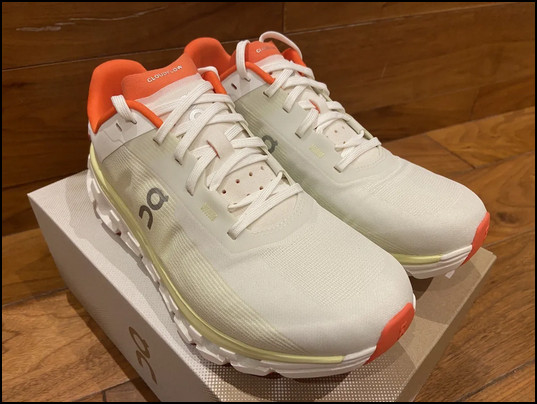
Cloudflow 4 is a very lightweight shoe, even lighter than Cloud 5.
Combining the dual-density Helion (firm and soft) superfoam and the spoon-shaped Speedboard tech, this shoe ensures a comfy experience for cross-training and tempo runs.
Attribute Comparison of Cloudflow 4 and Cloud 5
The significant difference between these shoes is in the midsole technology.
While the Cloudflow features dual-density Helion™ superfoam in the midsole, the Cloud 5 features CloudTec with Zero-gravity foam.
To understand all the major and minor divergences, consider the subsequent feature comparison table of Cloudflow and On Cloud 5.
| Attribute | Cloudflow 4 | Cloud 5 |
|---|---|---|
| Upper | Engineered woven upper | Breathable antimicrobial mesh upper |
| Insole | Removable insole | Removable insole |
| Midsole | Dual-density Helion™, spoon-shaped Speedboard® | Zero-gravity foam with CloudTec, updated Speedboard |
| Outsole | Closed channel rubber outsole | Durable rubber outsole |
| Comfort | Firm and responsive | More comfortable |
| Weight | 8.3 oz (235 g) | 8.82 oz (250 g) |
| Size | Regular | Regular |
| Fit | True to size | True to size |
| Heal-to-Toe Drop | 8 mm | 7 mm |
| Stack Height (heel) | 31 mm | 28 mm |
| Stack Height (forefoot) | 23 mm | 21 mm |
| Breathability | Well perforated | High breathability |
| Durability | Very durable | Extremely durable |
| Stability | Less stable | More stable |
| Price | $160 | $140 |
| Best for | Long distances, speedwork, cross-training, tempo runs | Walking, all day standing, nurses, workout |
Key Differences Between Cloudflow and Cloud 5
Due to the different lineups and distinct materials, these shoes have several differences. Understanding the differences from an attribute comparison table isn’t enough.
So, let me share my experiences and test results of Cloudflow 4 and Cloud 5 to assist you in pinpointing the most appropriate shoe for your running needs and style preferences.
1. Shoe Silhouette
Understanding the outline or general shape of the shoe is crucial before choosing your next shoe. The On Running shoes are designed for people who love to run and care about their feet.
Both Cloudflow and Cloud 5 have their unique silhouette.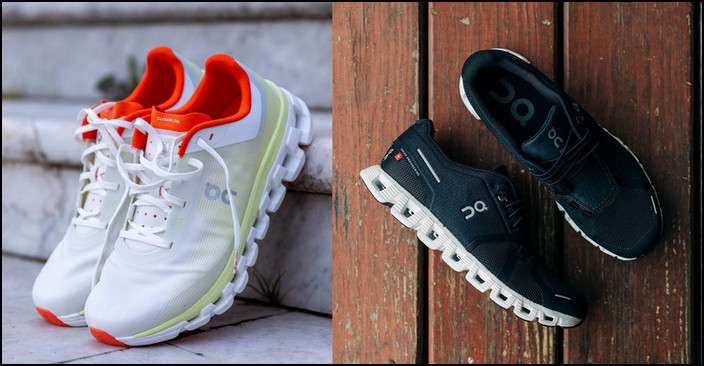
Let’s begin with Cloudflow 4. This lightweight racing shoe features multiple unique materials for the construction.
For instance, the upper of Cloudflow consists of breathable woven materials that offer next-gen speed and microscopic perforation to keep your feet cool.
This one-piece construction ensures a secure fit, and there is an overlay in the heel section.
The last (foot-shaped mold) features a narrow profile, and the midfoot is even slimmer.
With traditional lacing and multiple overlays in the lace section and the heel collar, the Cloudflow 4 is a quick and responsive shoe.
On the contrary, Cloud 5 is an athleisure shoe that utilizes at least 44% recycled content and offers the best fit and comfort.
It features a breathable mesh upper with multiple zonal overlays.
The speed lacing system features an easy on-and-off feature, making it ideal for people who don’t like knots.
Though the shape is narrower in the heel and midfoot area, the toe box is roomier, and there is plenty of space to move the forefoot inside the shoe.
Blending its unique lacing and the molded heel design, Cloud 5 holds the feet securely and prevents heel slipping.
Both shoes are available in multiple colorways to suit any outfit and style.
| Shoe Model | Colorways |
|---|---|
| Cloudflow 4 | Glacier | Chambray, Black | Storm, White | Hay, White | Sand, Black | White, Quartz | Flame |
| Cloud 5 | Glacier | Glacier, Chambray | White, Zinc | Canyon, Haze | Bronze, Niagara | Black, Hay | Frost, Glacier | White, Midnight | White, Black | White, All Black, Undyed-White | White |
Both shoes feature great silhouettes and are made for different purposes that are visible in the shoe design.
2. Upper Materials
While the Cloudflow 4 features an engineered woven upper, Cloud 5 consists of a breathable antimicrobial mesh upper.
These materials’ characteristics are different, directly affecting the breathability and comfort.
The woven upper of the Cloudflow 4 is a two-layer, thin, engineered mesh that offers excellent breathability and can keep the feet cool in hot climates.
Conversely, the antimicrobial mesh upper of the Cloud 5 is more breathable and almost transparent, making it more breathable than the Cloudflow.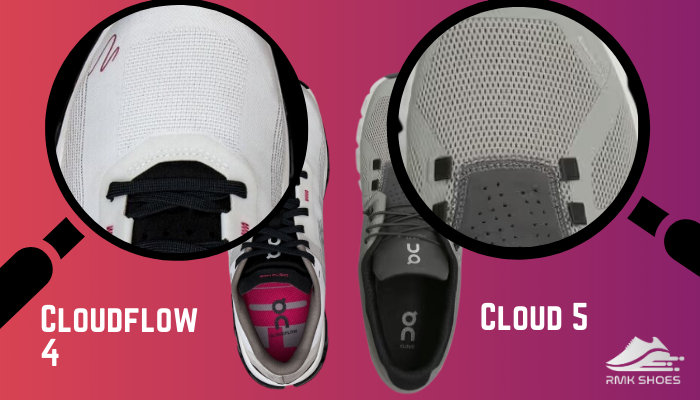
During my test, I noticed even after wearing socks, the Cloud 5 can easily circulate the cool air and keep the feet more relaxed.
There are also some noticeable differences in the lacing system, tongue, and heel collar.
Lacing
Cloudflow 4 features a standard or traditional lacing system with flat laces. This lacing system allows a secure and customizable fit.
For the lacing of Cloud 5, On utilizes the speed lacing system with round laces. This unique lacing property allows a quick slip on and off with a comfortable and relaxed fit.
In addition, in the box of Cloud 5, there are additional classic laces in case you want one.
Tongue
Cloudflow 4 features a bootie-style tongue that assists in controlling fast movements and prevents slipping during frequent cornering.
This model’s thin tongue padding (2.5 mm) can often cause lace bites. A more padded tongue would be better, but to keep the shoe featherweight, On kept it slim instead.
Contrarily, Cloud 5 features a thicker and bigger gusset-type tongue (2.9 mm).
This thickness makes the tongue more comfortable, and you won’t feel uncomfortable even during high-speed cornering.
Heel Counter
There are significant divergences in the heel counter of both shoes.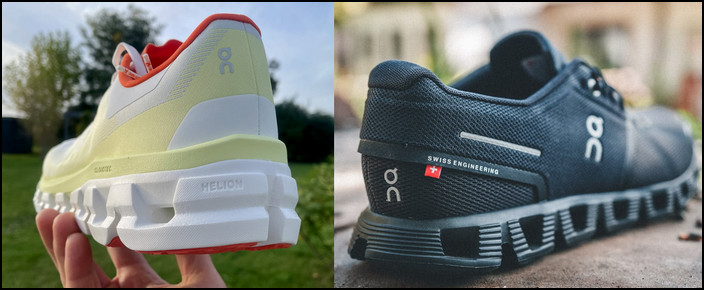
Cloudflow 4 has a less stiff heel counter, which is quite flexible. Instead of enhancing stability, On focuses on heel collar padding, making it a comfortable daily trainer.
Cloud 5, on the other hand, has a narrow heel counter. There is adequate padding to ensure the best comfort and prevent heel slipping.
Toe Box
While the toe box of Cloudflow 4 is wider (95.7 mm), Cloud 5 has a narrower toebox (89.5 mm).
The wide toe box of the Cloudflow makes it ideal for people with wide feet and offers plenty of space to move the forefoot.
But when it comes to the Cloud 5, its narrower toe box can cause blisters or foot injuries.
In short, Cloud 5 surpasses Cloudflow regarding breathable and durable upper constructions. In addition, Cloudflow 4’s upper is suitable for wide feet that don’t apply to Cloud 5.
3. Sole Technologies
On utilizes its proprietary sole technologies for crafting all shoes. There are some noticeable differences between Cloudflow 4 and Cloud 5’s sole techs.
Insole
For the insole, both shoes utilize a removable insole that can be easily replaced with third-party soles.
Cloud 5 features a thicker insole (4.4 mm) that provides excellent step-in comfort. The insole of Cloudflow is a little thinner (4.1 mm), meaning there is less cushioning under the foot.
Midsole
The primary differences between these shoes are in the midsole technologies.
For the midsole construction of Cloudflow 4, On utilizes the CloudTec with dual-density Helion superfoam and a spoon-shaped Speedboard.
Combining these techs, Cloudflow offers a firm and responsive ride.
On the other hand, for the midsole of Cloud 5, On utilizes Zero-gravity foam with CloudTec and an updated Speedboard.
These unique midsole materials make it more comfortable than the Cloudflow.
However, during my test, I noticed Cloud 5’s cushioning is not comparable to other high-cushioned On shoes like Cloudstratus 3, and it’s a little firmer than most shoes.
Outsole
The CloudTec pods often catch stones, which was a concern for many On users.
The On fixed it in Cloudflow by introducing a closed-channel rubber outsole. This unique sole restricts stones from getting into the pods.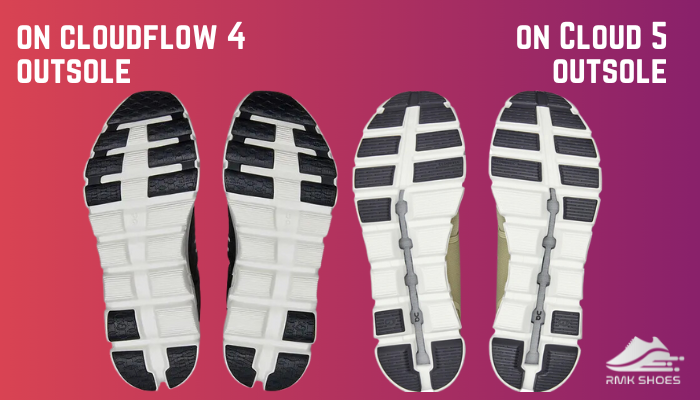
Outsole rubber is visible on the pods, mainly on the forefoot and the heel area.
Though this is good for heel strikers, midfoot strikers may feel less grippy due to the lack of midfoot outsole rubber.
Similarly, Cloud 5 also features similar rubber on the CloudTec pods. The outsole rubber is comparatively thinner on the Cloud 5, making it less durable.
In summary, both shoes are full of innovative and high-performance tech. However, Coud 5 outshines the Cloudflow with a thicker insole and a comfy midsole.
4. Fit and Comfort
While choosing a shoe, you must consider the fit and comfort to ensure the best performance and exceed your limits.
Consider the subsequent discussion to understand how these shoes fit and how much cushioning they offer.
Sizing
In terms of sizing, Cloudflow 4 runs true-to-size. But this shoe’s narrow silhouette (midfoot and heel) won’t be a great choice if you’ve wide feet.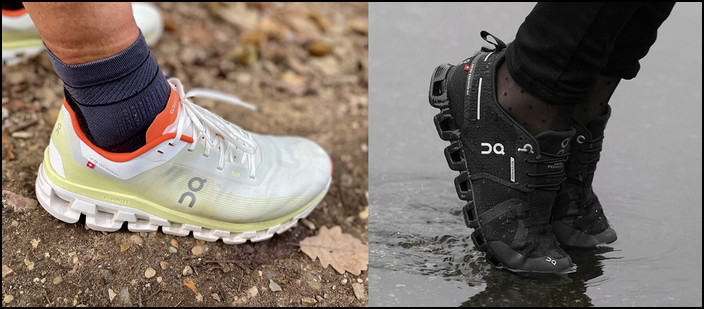
For most runners, Cloud 5 also runs true-to-size. However, it’s even narrower than Cloudflow, so go up half a size while picking On Cloud 5.
Cushioning
None of these shoes are highly cushioned.
While Cloudflow features firm and responsive cushioning, Cloud 5 offers some moderate plush cushioning for prolonged comfort.
Blending the Zero-gravity foam, more padded heel tab, and a thicker insole, the Cloud 5 is more comfortable than the Cloudflow 5.
Weight
Undoubtedly, both shoes are lightweight. Still, there is a huge divergence.
The average weight of Cloudflow 5 is 8.3 oz or 235 g. The reason behind this featherweight is the lightweight upper and less dense sole materials.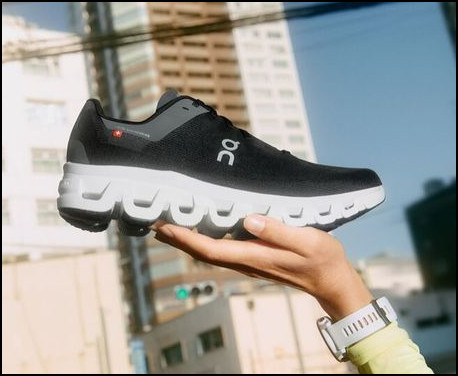
On the contrary, the weight of the Cloud 5 is around 8.82 oz or 250 g, which is still lighter than most cushioned shoes from other brands.
The reason behind this lightness is the material selection of Cloud 5.
For instance, the mesh upper and the zero-gravity foam are incredibly lightweight as a result, the Cloud 5 is a featherweight shoe even after being a cushioned shoe.
Cloud 5 outshines Cloudflow in terms of better cushioning. However, Cloudflow offers the best fit and is mostly true-to-size regardless of various foot shapes.
5. Durability & Stability
Usually, changing the running shoes after 200-300 miles is suggested. And it applies to the On Running shoes more than any brand.
The engineered woven upper of the Cloudflow shoes is remarkably durable, with no weak points.
From the toe box to the heel padding, the Cloudflow 4 is an impressive shoe that lasts longer.
The harder outsole rubber of the Cloudflow shoes is very durable, but the result wasn’t so satisfying during my test. The outsole was damaged after running 200 miles.
Conversely, though overall the Cloud 5 is a durable shoe, two major weaknesses are the mesh upper and the forefoot foam.
The mesh upper is less durable than the polyester woven upper and gets damaged quickly.
In addition, the forefoot foam scratches near the toe and is worn quicker than the forefoot foam of the Cloudflow 5.
None of these shoes are a stability shoe.
However, the Cloud 5 offers moderate stability utilizing the updated Speedboard and the supportive upper construction.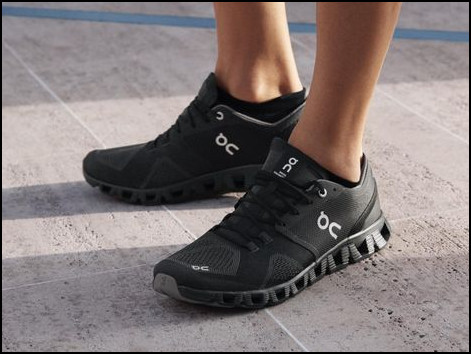
Cloudflow, on the other hand, provides some stability thanks to its spoon-shaped Speedboard plate and the rockered geometry.
Both shoes are durable and offer moderate stability. Still, the Cloud 5 surpasses the Cloudflow 4 in terms of stability.
6. Traction & Versatility
I have tested both shoes on various surfaces, and the result was pretty astonishing.
The On Running shoes somehow provide excellent grip using a small amount of rubber outsole under the pods.
The rubber outsole of the CLoudflow 5 offers reliable traction on both road and gym surfaces.
But this outsole struggles on wet surfaces.
Conversely, Cloud 5’s outsole also provides excellent grip on most surfaces, and you can effortlessly use this pair for trail running adventure.
Cloudflow 5 is a versatile daily trainer that can be used for various runs and workouts.
But the Cloud 5 is more versatile, and its sleek design makes it ideal for everyday wear.
In short, Cloud 5 outshines Cloudflow 5 with better traction on various surfaces and is more versatile, surpassing the running shoe nature.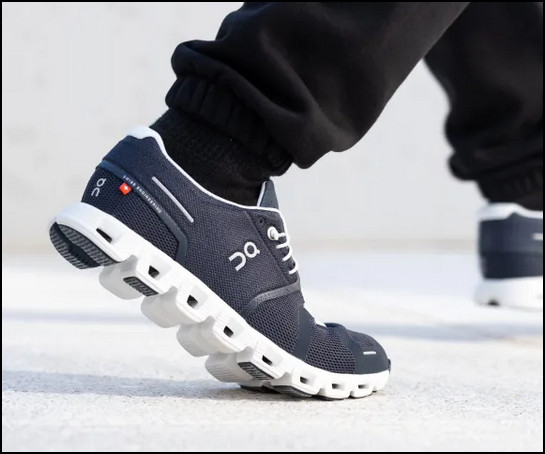
7. Price and Value
Though both shoes are comparable in performance and features, there is a significant difference in the pricing.
While the Cloudflow 5 is available for $160, Cloud 5 is listed for $140.
Now, if we compare both shoes’ price and value ratios, I must admit that their prices are justifiable.
However, if you’re seeking a performance-oriented shoe with responsive cushioning, a lightweight feel, and a stylish design, Cloudflow 5 is the best pick.
If you prioritize comfort, durability, and versatility, Cloud 5 is the best choice.
Overall, both shoe’s prices are legitimate and offer the best value for the buck.
Pros & Cons of Cloudflow and Cloud 5
At this point, you know that both shoes have strengths and weaknesses.
But before finalizing the acquisition decision, you must consider the pros and cons of both shoes to pinpoint the most appropriate one based on your running style.
The following are the merits and demerits of Cloudflow 4 and Cloud 5.
Cloudflow
- »Excellent energy return.
- »Very lightweight and nimble.
- »Versatile for various workouts.
- »Effective rockered geometry.
- »Closed channel design.
- »Comfortable for everyday wear.
- »Firmer midsole foam.
- »Narrow midfoot fit.
Cloud 5
- »Lightweight and comfortable.
- »Perfect for all-day wear.
- »Easy to slip on and off.
- »Incredible in-shoe feel.
- »Sleek and aesthetically designed.
- »Affordable price point.
- »Not suitable for wide feet.
- »The speed lacing system is not for everyone.
Cloudflow vs Cloud 5: Which One Should You Pick?
Choosing the best On shoes between eh Cloudflow 4 and the Cloud 5 highly depends on your style preferences, running needs, and biomechanics.
If you prioritize comfort and responsiveness, the comfy dual-density Helion superfoam and the spoon-shaped Speedboard tech of Cloudflow 5 suit you best.
In case you’re seeking a versatile, better cushioned, and durable shoe, the Zero-gravity foam with CloudTec and the updated Speedboard of Cloud 5 is the best pick.
In addition, go for the Cloud 5 if you’re on a tight budget and want a great versatile shoe without breaking the bank.
Frequently Asked Questions
What is the average lifespan of Cloudflow and Cloud 5 shoes?
The longevity of these shoes highly depends on use scenarios. Both shoes feature premium quality, durable materials for their construction. However, with proper care and maintenance, the Cloudflow and Cloud 5 shoes can last approximately 300-450 miles.
Why are Cloud 5 shoes so popular?
Cloud 5 is the best-selling On Cloud shoe that is very popular among runners and fashion enthusiasts. This shoe is popular due to its versatility, stylish appearance, and easy slip-on and-off system.
What is so special about Cloudflow shoes?
Cloudflow shoes make the latest and most remarkable technologies available for all runners. This shoe features a dual-density Helion superfoam and a spoon-shaped Speedboard, making it a fast, responsive, and cushioned shoe.
Are Cloudflow shoes acceptable for walking?
Though Cloudflow is a workout companion, it is also suitable for walking due to its incredible comfort and unique looks. From tempo runs to prolonged walking, this versatile shoe can assist you in every step to propel you forward without burning a ton of energy.
Are Cloud 5 shoes suitable for walking?
Yes, due to its lightweight, comfy cushioning, and wider platform, the Cloud 5 is very suitable for walking. If you want a lightweight walking shoe, the best option is the Cloud 5.

